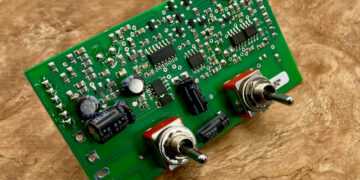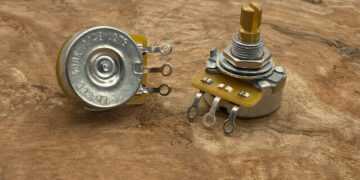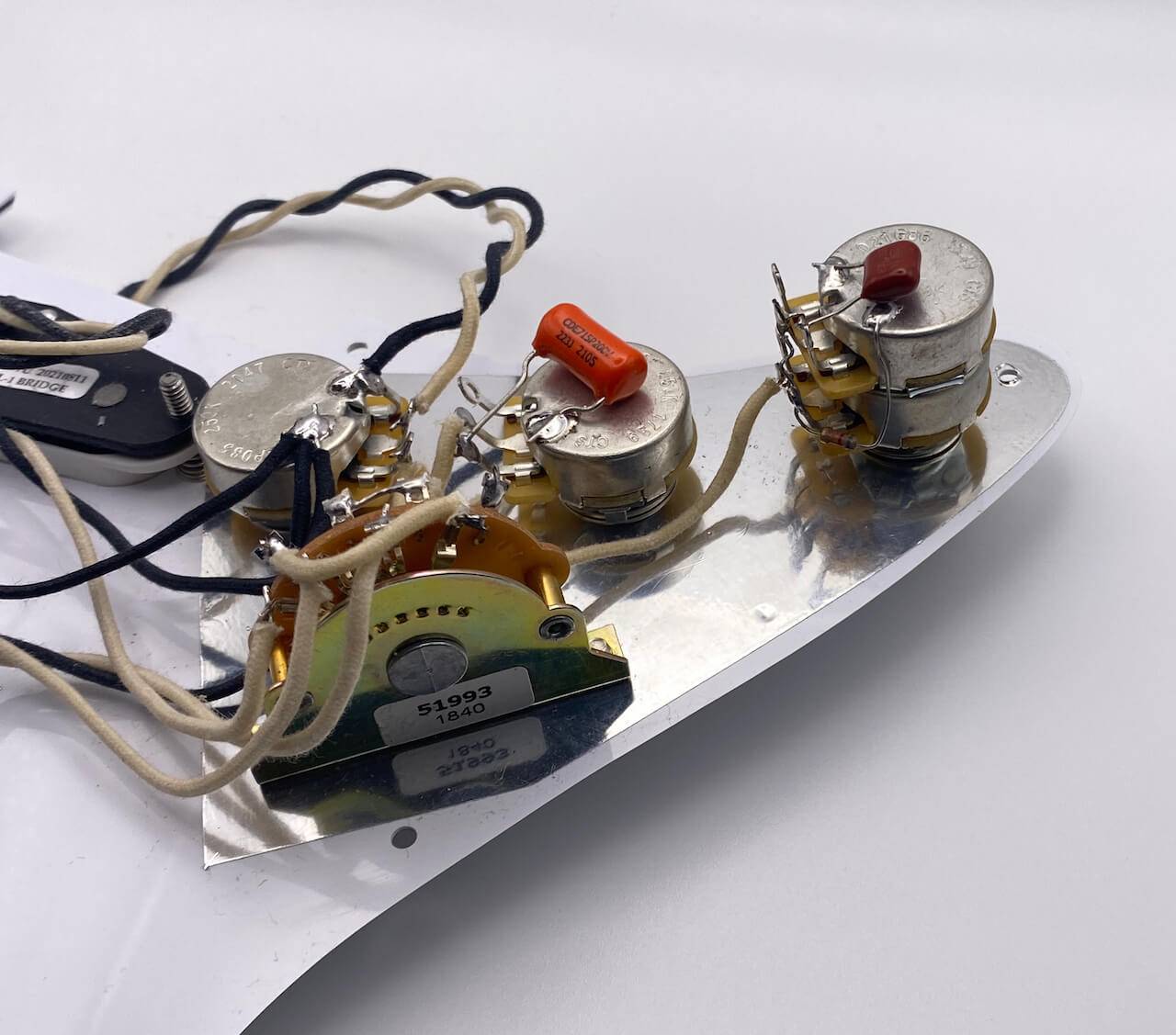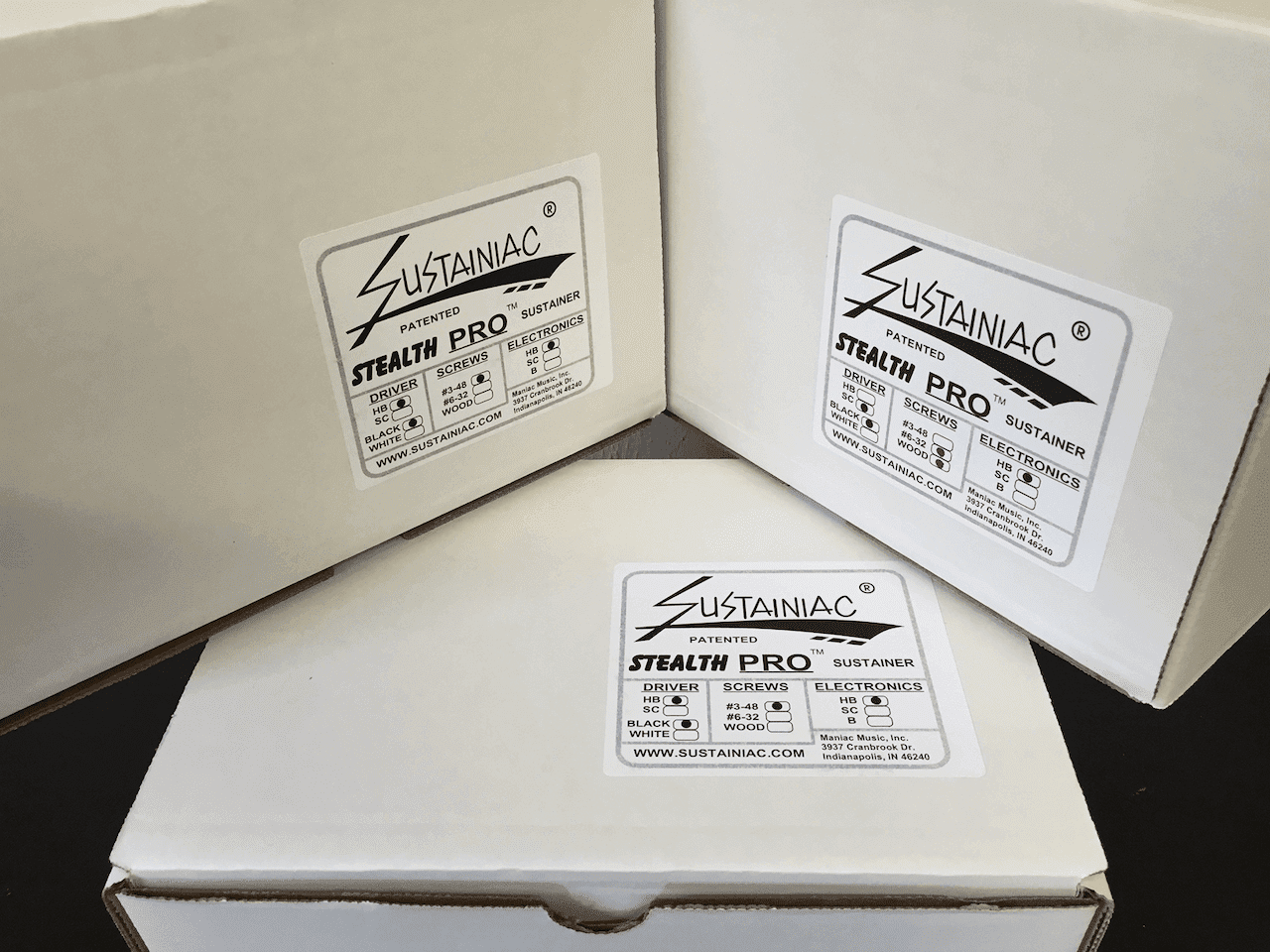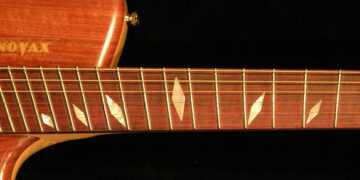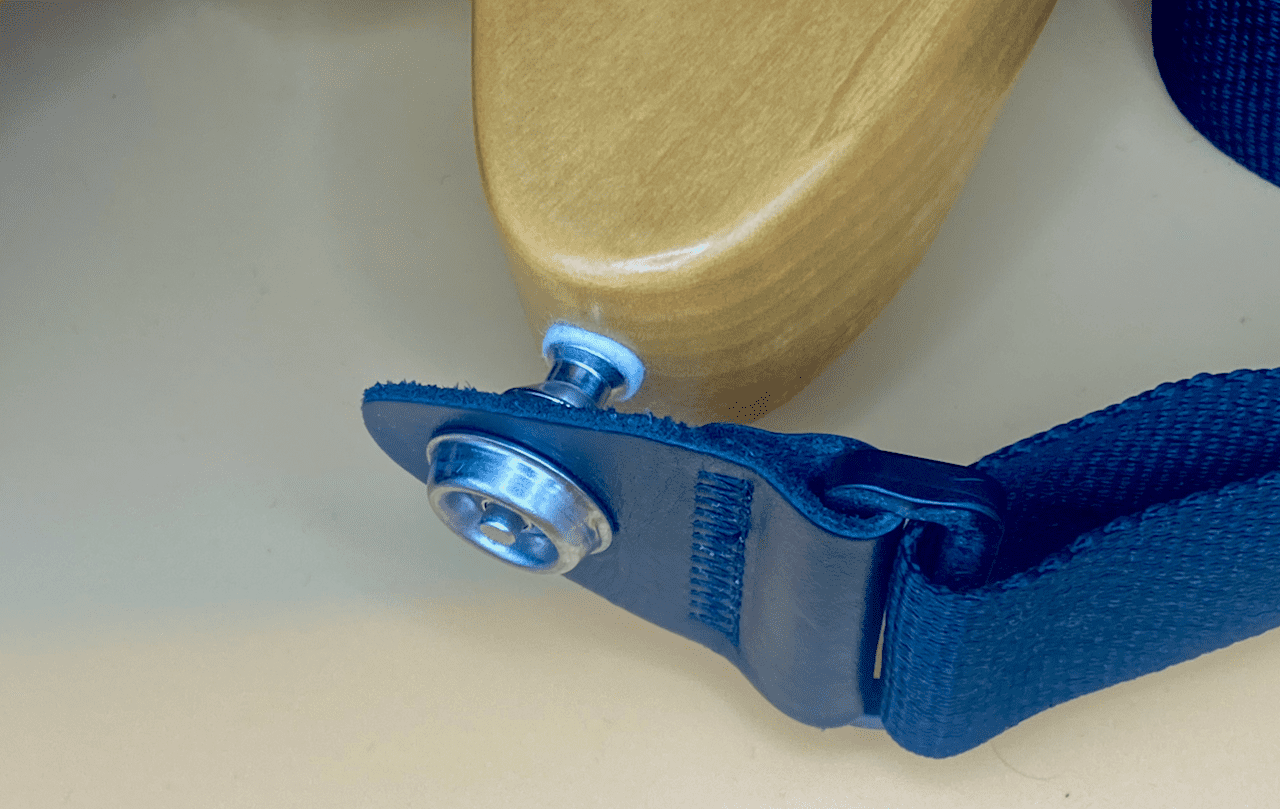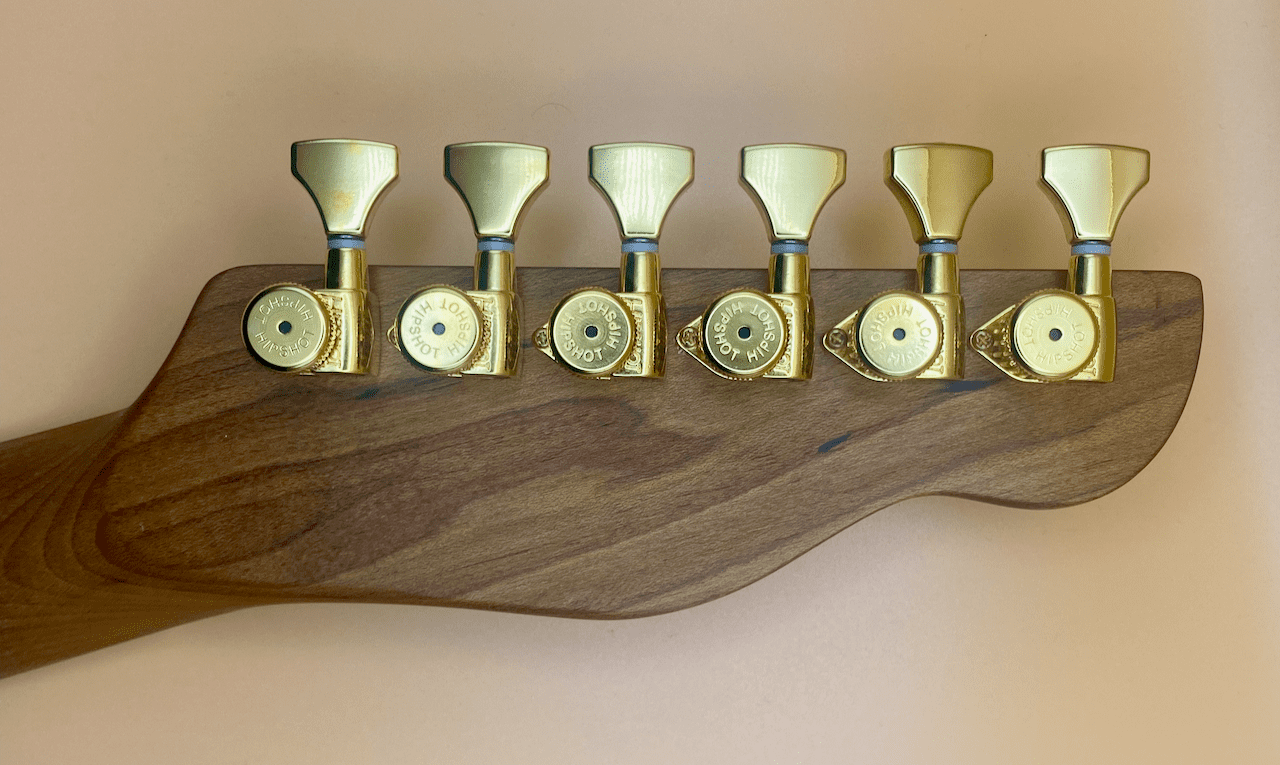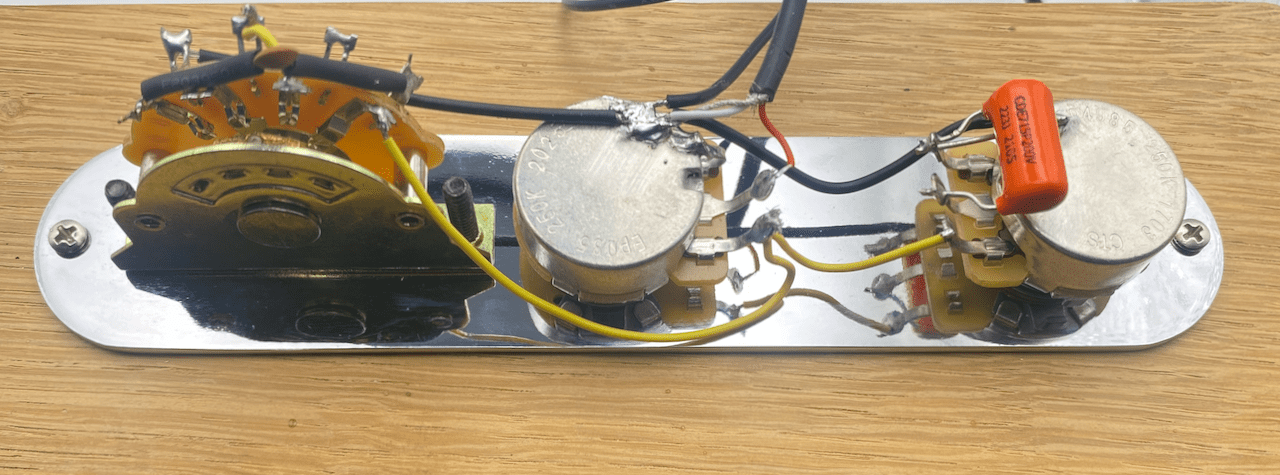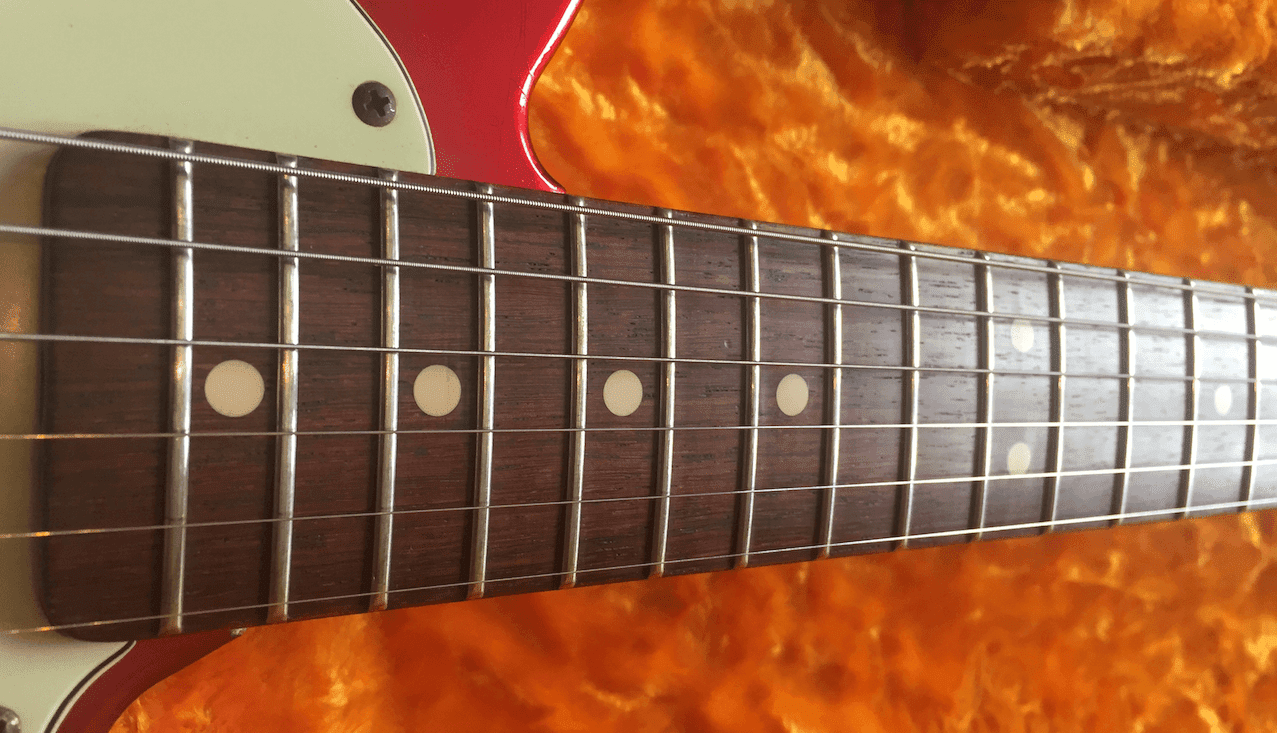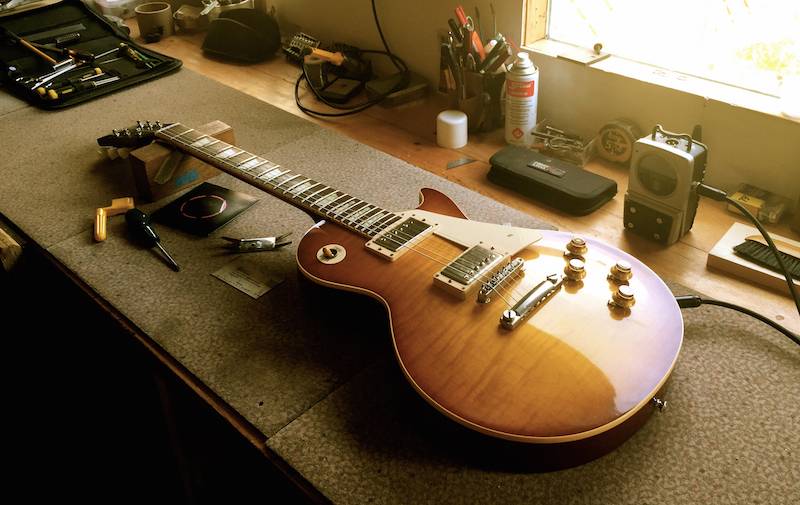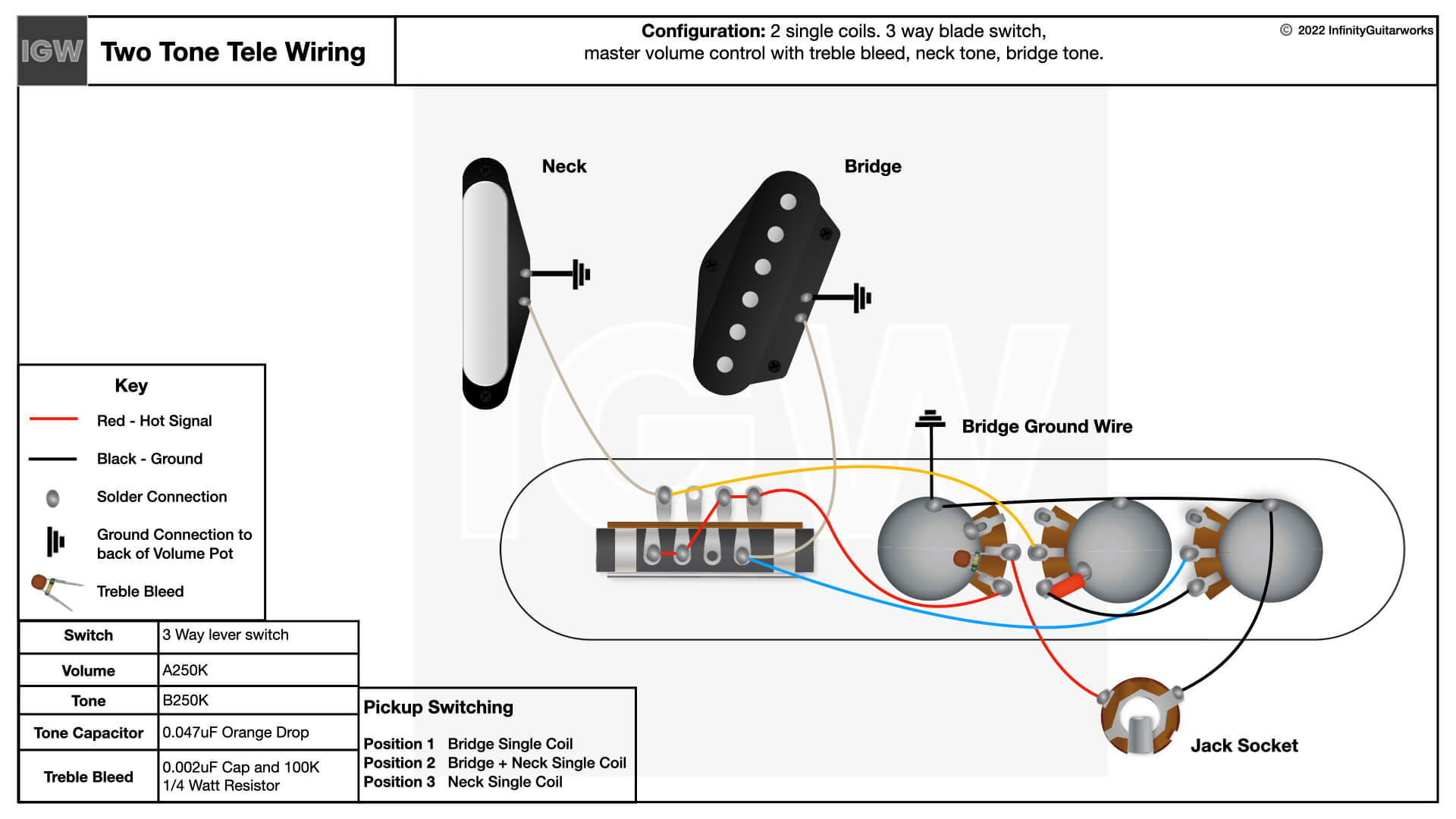Can I get two tone controls wired into my Telecaster?
Two tone tele wiring is totally possible in most Telecasters. It’s a bit involved and takes some inspiration from its younger brother, the Stratocaster. So let’s look at what needs to be done.
Why would I want two tone controls?
The ability to adjust the tone settings of each pickup in your guitar can vastly change the overall sound. It allows you, for example, to roll off some of the highs from your neck pickup while still having the bridge pickup fully open. This has a massive effect when switching from rhythm to lead playing. A flick of the selector switch and your Telecaster suddenly springs into life. There are also benefits when in the middle position as well. Having two tone controls allows you to balance the sound of each pickup exactly how you want it.
So how do you wire it?
There are a couple of ways of doing this, depending on how much work you want to put in. The two methods follow the same wiring process, they’re just in slightly different configurations.
We’ll start with a very “Brent Mason” style telecaster arrangement. This adds a third pot to the Telecaster control plate. You can buy ready-made versions, but if you can’t find one you will have to drill a new hole in your plate. This is very much a ‘measure twice, drill once’ situation and it’s probably best to use a pillar drill to make sure the hole is exactly where you want it.
But don’t worry, if you’re not interested in drilling a hole in your control plate, keep reading. We’ve got another solution for you later.
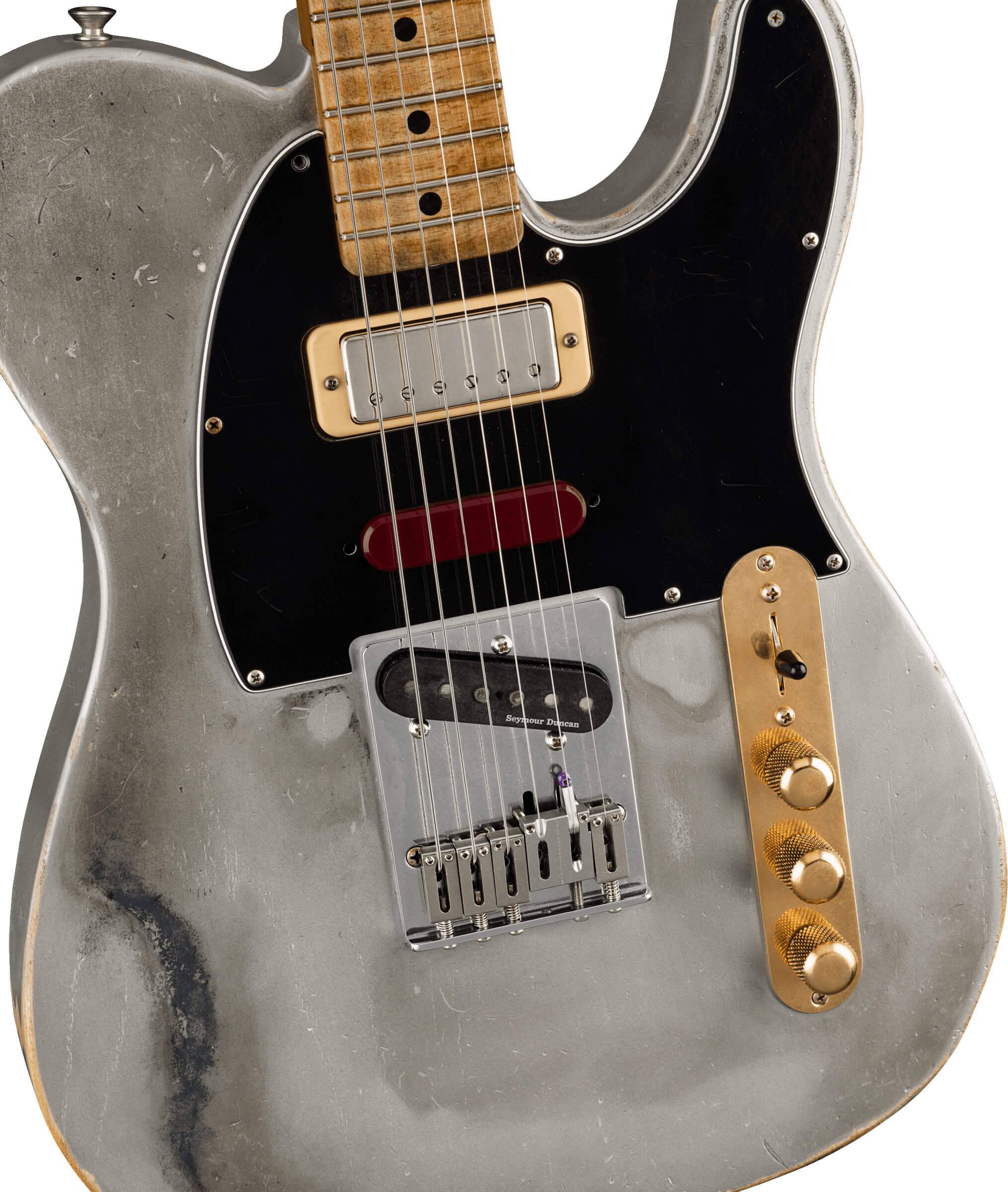
The wiring itself flips the order of the pots around electrically to allow you to have individual tone pots for each pickup and a master volume. You could do this wiring with a 3 or a 4 way lever selector switch, but for this example, we’re going to stick to stick with the 3 way lever selector switch. The selector switch and pickup wiring don’t actually change. We only add two wires to it. The biggest change comes with the pots.
The two tone pots are wired in very much the same way as they are on a Stratocaster, with both pots sharing the same tone capacitor. The middle lug on each tone pot then connects to the hot wire connection for each pickup on the selector switch. The tone pot now in the middle runs to the neck pickup, while the original tone pot runs to the bridge. This gives you a logical layout for the two tone pots.
You can see in the wiring schematic how the two tone pots connect to the switch before the volume pot in the circuit. This is completely backwards compared to a traditional Telecaster wiring. We have also added a treble bleed to the circuit to balance treble response at lower volume levels, but if you don’t want that in the circuit you can just omit it
But what if I don’t want to drill an extra hole?
If you don’t want to go to the hassle of drilling out a new tone pot hole in your control plate, there is a solution. You can use a concentric pot to achieve the same results.
The wiring is exactly the same, but the stacked concentric pot allows you to individually control each tone using a concentric stacked knob set in place of your existing control knob.
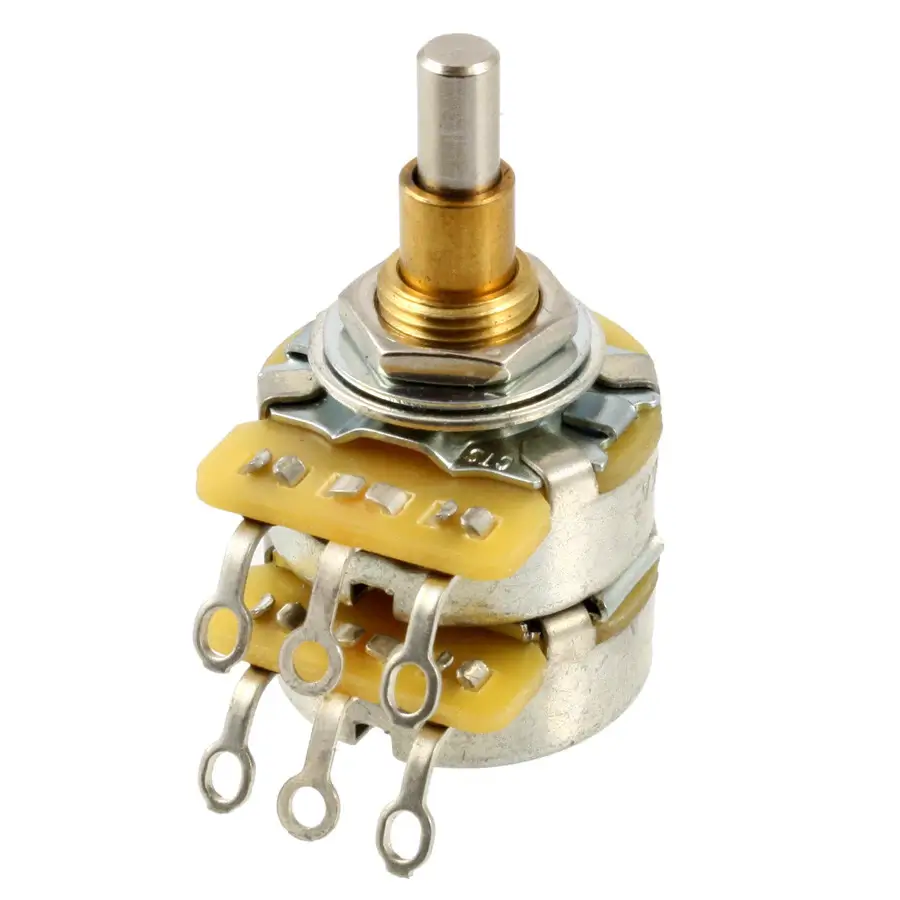
Ideally, you would use a 250K/250K concentric pot. The wiring layout is shown below. If you can’t find a 250K/250K pot then you can use a 250K/500k concentric pot instead, with a little mod. On the 500k pot (the lower pot, when the unit is installed) you can add a 250K 1/4 Watt resistor in parallel to bring the overall resistance down to 250K. This is wired in the same way as a treble bleed circuit, going between the middle and right-hand lug. You could experiment at this point with other resistor values. Stepping down the 500K to maybe 300K, to dial in a specific tone for that pickup.

So there you have it. A Telecaster mod that gives you individually tone controls for each of your pickups. Opening up even more versatility to an already very versatile guitar.
Buy This Kit
If this wiring mod seems like something you’d like to try, we have all the parts available on our sister site.
You can purchase the kits as either a self-assembly kit, with full wiring schematics or as a pre-made wiring loom.
Check out the kits at:

